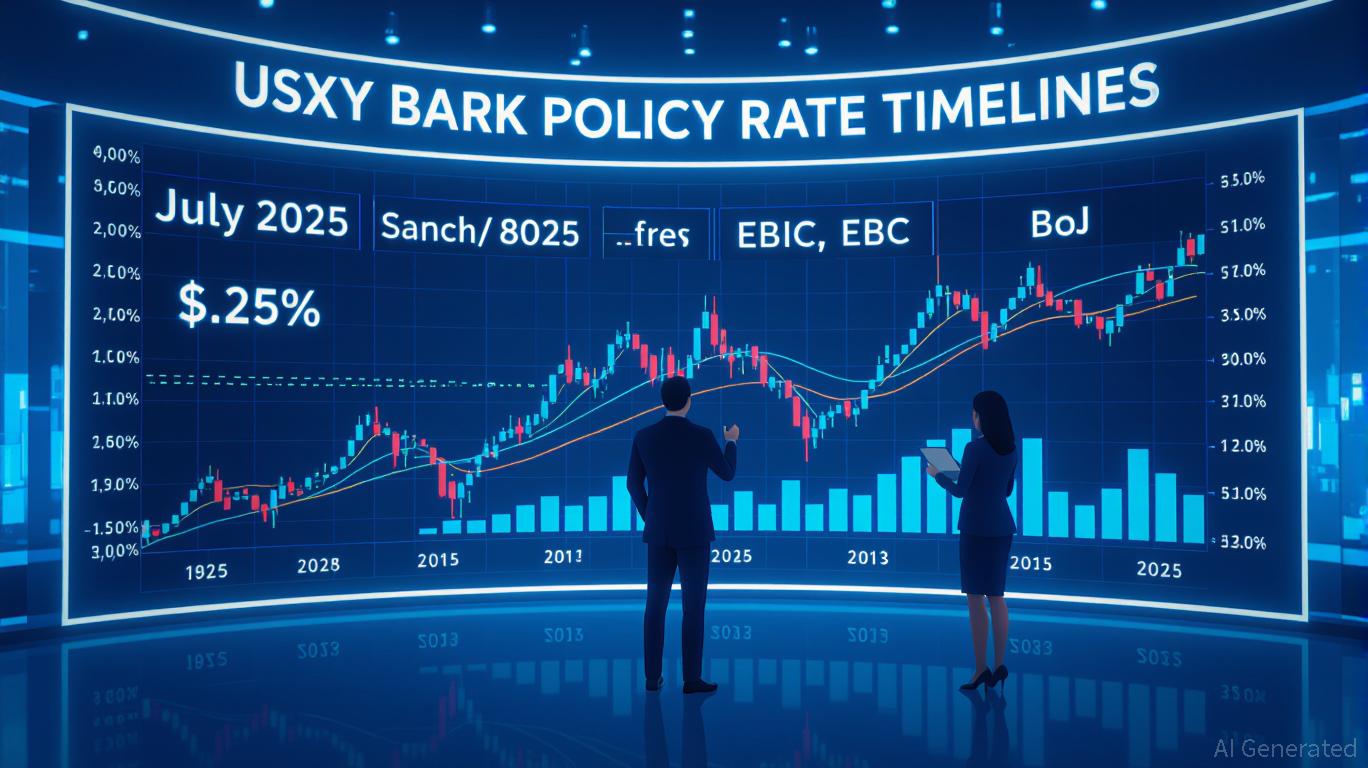AInvest Newsletter
Daily stocks & crypto headlines, free to your inbox
Institutional investors have long eyed blockchain assets with cautious optimism, drawn by their potential but deterred by regulatory ambiguity and technical complexity.
(ADA), however, is emerging as a paradigm-shifting contender by blending cutting-edge AI integration, robust financial transparency, and proactive regulatory compliance. Its recent 2024 Financial Insights Report and strategic partnerships underscore its readiness to attract institutional capital, while third-party projections suggest ADA could become a cornerstone of long-term portfolios by 2035.The Cardano Foundation's 2024 Financial Insights Report reveals a treasury of $659.1 million, with 76.7% allocated to its native ADA, 14.9% in
(BTC), and 8.3% in cash and equivalents. This diversification minimizes dependency on a single asset, a critical factor for risk-averse institutional investors. Crucially, the Foundation's income—$17.1 million in staking rewards from 599.2 million ADA—funds operations without liquidating core holdings, ensuring long-term sustainability.
The report's transparency is bolstered by Reeve, Cardano's blockchain-native financial reporting tool. By recording data immutably on-chain, Reeve eliminates third-party audits, enabling real-time verification of expenditures like the $15 million allocated to enterprise adoption projects (e.g., blockchain-based ballistic ID systems and real estate platforms) or the $3.3 million invested in education initiatives such as the Cardano Blockchain Certified Associate (CBCA) program. This level of accountability aligns with institutional demand for verifiable governance.
While Cardano's core infrastructure is rooted in peer-reviewed academic research, its recent advancements in AI-driven smart contracts are its secret weapon. The open-source Aiken programming language simplifies smart contract development, reducing errors and enhancing scalability. Pair this with hard forks like Chang, which expanded interoperability via the Inter-Blockchain Communication Protocol, and Cardano emerges as a platform capable of supporting enterprise-grade applications.
For institutions, this means access to programmable, AI-optimized financial instruments that can automate compliance, risk assessment, and cross-chain transactions. For example, Cardano's collaboration with Amnesty International and the UN Development Programme demonstrates its ability to execute complex, socially impactful smart contracts—proof of its enterprise viability.
Regulatory uncertainty has historically hindered crypto's institutional adoption. Cardano addresses this head-on through proactive engagement. Its 2024 report highlights MiCA-compliant sustainability reporting and partnerships with regulators like the Swiss Financial Market Supervisory Authority (FINMA). The Foundation's $3.8 million investment in operational resilience, including decentralized governance upgrades, ensures its blockchain remains stable and auditable—a must for institutional entrants.
Moreover, Reeve's ability to generate tamper-proof financial records aligns with ESG reporting standards, a priority for socially responsible funds. As governments worldwide draft crypto regulations, Cardano's pre-emptive alignment positions it as a low-risk, high-reward asset.
While the Cardano Foundation does not publish official price targets, third-party analyses suggest compelling growth potential. Current ADA trades at $0.61, but projections indicate an average price of $21.35 by 2034—a 3,432% increase—with a maximum forecast of $25.89. By 2050, estimates climb to $531.50, driven by ecosystem expansion and protocol upgrades.
These figures hinge on Cardano's execution of its roadmap: interoperability with legacy systems, AI-integrated DeFi tools, and enterprise partnerships. Institutions seeking exposure to blockchain's future would be remiss not to consider ADA's $0.61 entry point amid its $659 million treasury and Reeve's transparency.
Cardano's blend of technical sophistication, financial transparency, and regulatory foresight makes it uniquely positioned to bridge retail and institutional markets. Its 2024 financials and strategic bets—like Reeve and Aiken—suggest a path to becoming a de facto standard for compliant blockchain infrastructure.
Recommendation:
- For long-term investors: Allocate 1–3% of a diversified portfolio to ADA, leveraging its $0.61 price and projected 2035 valuations.
- For institutions: Consider Cardano's treasury stability and Reeve's auditability as mitigants to crypto's traditional risks.
Cardano is no longer just a cryptocurrency—it is a protocol infrastructure with AI-powered tools, enterprise partnerships, and regulatory alignment. As institutional capital seeks safe harbors in an evolving crypto landscape, ADA's 2024 financials and 2035 potential make it a compelling bet for those willing to look beyond short-term volatility. The path to adoption is clear; the question now is whether institutions will act before the market does.
Delivering real-time insights and analysis on emerging financial trends and market movements.

Sep.11 2025

Sep.11 2025

Sep.11 2025

Sep.11 2025

Sep.11 2025
By continuing, I agree to the
Market Data Terms of Service and Privacy Statement
Daily stocks & crypto headlines, free to your inbox
Comments
No comments yet